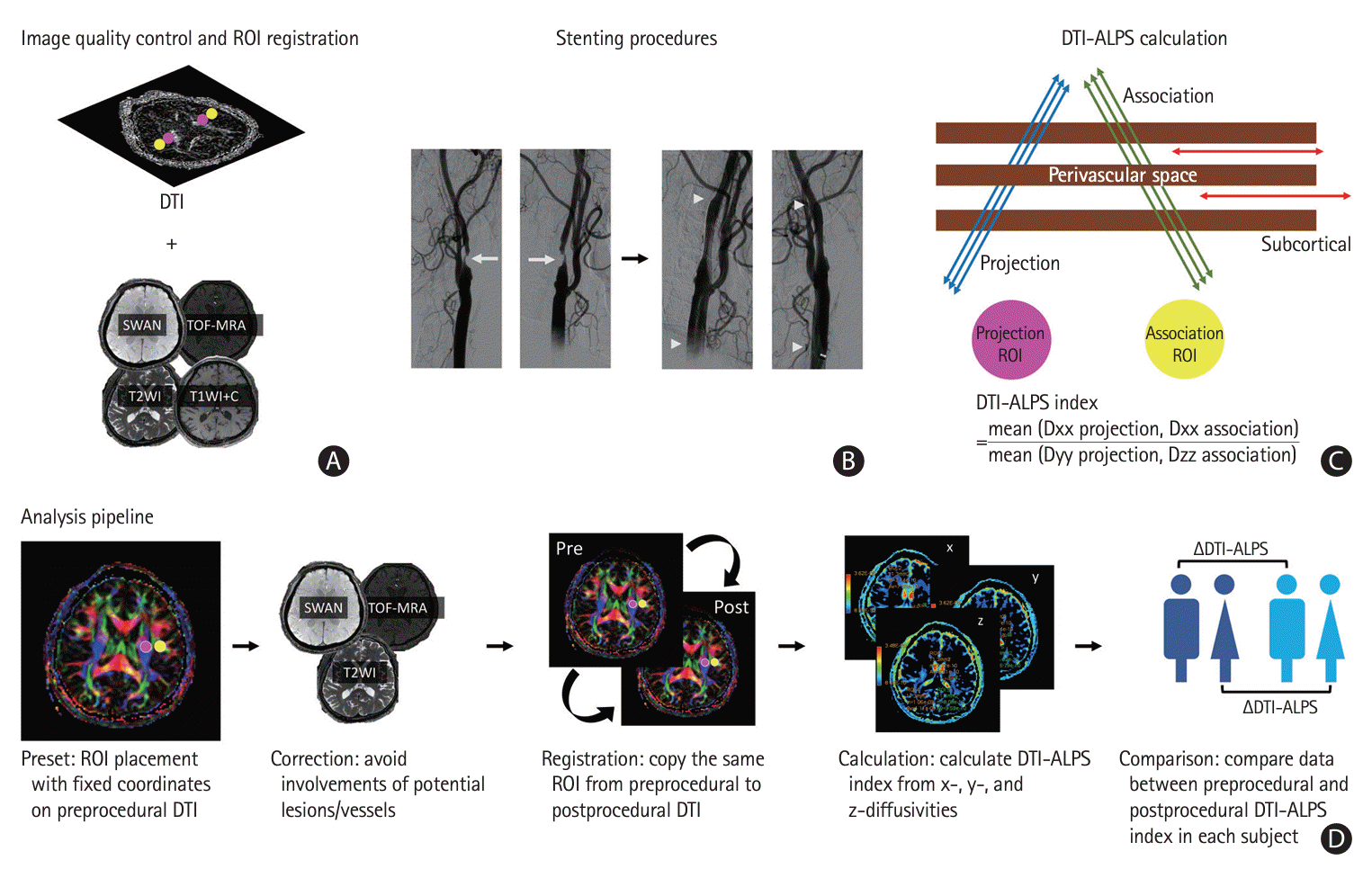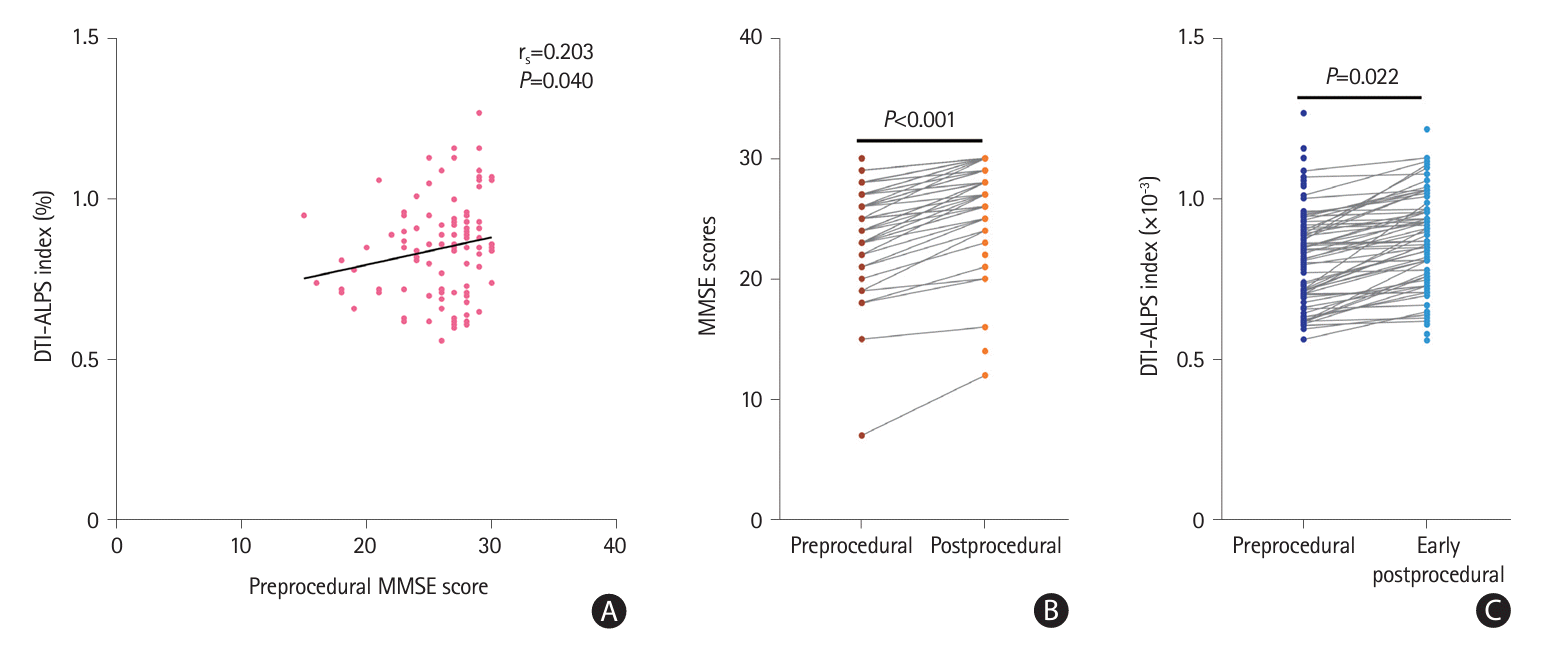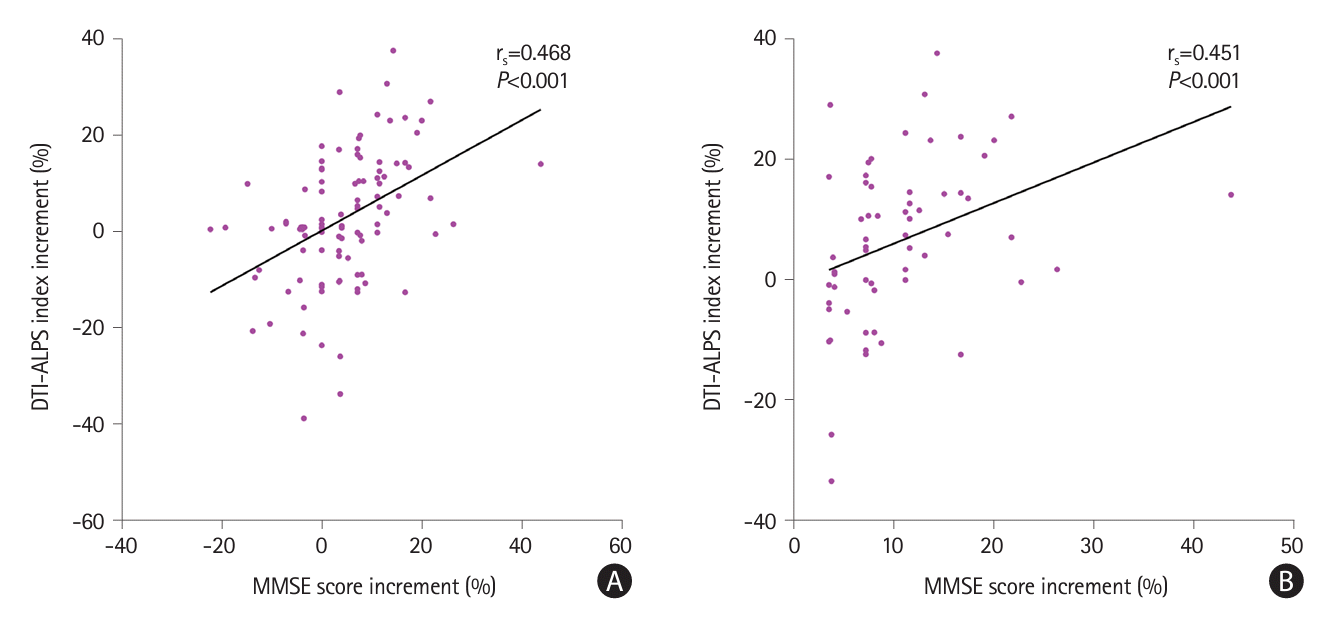1. Yadav JS, Wholey MH, Kuntz RE, Fayad P, Katzen BT, Mishkel GJ, et al. Protected carotid-artery stenting versus endarterectomy in high-risk patients. N Engl J Med. 2004; 351:1493–1501.

2. Ederle J, Bonati LH, Dobson J, Featherstone RL, Gaines PA, Beard JD, et al. Endovascular treatment with angioplasty or stenting versus endarterectomy in patients with carotid artery stenosis in the carotid and vertebral artery transluminal angioplasty study (CAVATAS): long-term follow-up of a randomised trial. Lancet Neurol. 2009; 8:898–907.

3. Haubrich C, Kruska W, Diehl RR, Möller-Hartmann W, Klötzsch C. Recovery of the blood pressure – cerebral flow relation after carotid stenting in elderly patients. Acta Neurochir (Wien). 2007; 149:131–136. discussion 137.

4. Lu CJ, Kao HL, Sun Y, Liu HM, Jeng JS, Yip PK, et al. The hemodynamic effects of internal carotid artery stenting: a study with color-coded duplex sonography. Cerebrovasc Dis. 2003; 15:264–269.

5. Wu CH, Lin TM, Chung CP, Yu KW, Tai WA, Luo CB, et al. Prevention of in-stent restenosis with drug-eluting balloons in patients with postirradiated carotid stenosis accepting percutaneous angioplasty and stenting. J Neurointerv Surg. 2023; 16:73–80.
6. Hsu YJ, Wu CH, Tai WA, Yu KW, Luo CB, Lin TM, et al. Early recurrent ischemic stroke involving the independent carotid territory after intravenous thrombolysis: a case report and literature review. J Radiol Sci. 2023; 48:e00017.

7. Chen YH, Lin MS, Lee JK, Chao CL, Tang SC, Chao CC, et al. Carotid stenting improves cognitive function in asymptomatic cerebral ischemia. Int J Cardiol. 2012; 157:104–107.

8. Kwok CHR, Park JC, Joseph SZ, Foster JK, Green DJ, Jansen SJ. Cognition and cerebral blood flow after extracranial carotid revascularization for carotid atherosclerosis: a systematic review. Clin Ther. 2023; 45:1069–1076.

9. Turowicz A, Czapiga A, Malinowski M, Majcherek J, Litarski A, Janczak D. Carotid revascularization improves cognition in patients with asymptomatic carotid artery stenosis and cognitive decline. Greater improvement in younger patients with more disordered neuropsychological performance. J Stroke Cerebrovasc Dis. 2021; 30:105608.

10. Nedergaard M, Goldman SA. Glymphatic failure as a final common pathway to dementia. Science. 2020; 370:50–56.
11. Wang DJ, Hua J, Cao D, Ho ML. Neurofluids and the glymphatic system: anatomy, physiology, and imaging. Br J Radiol. 2023; 96:20230016.

12. Siow TY, Toh CH, Hsu JL, Liu GH, Lee SH, Chen NH, et al. Association of sleep, neuropsychological performance, and gray matter volume with glymphatic function in community-dwelling older adults. Neurology. 2022; 98:e829–e838.

13. Kamagata K, Andica C, Takabayashi K, Saito Y, Taoka T, Nozaki H, et al. Association of MRI indices of glymphatic system with amyloid deposition and cognition in mild cognitive impairment and Alzheimer disease. Neurology. 2022; 99:e2648–e2660.

14. Ding XB, Wang XX, Xia DH, Liu H, Tian HY, Fu Y, et al. Impaired meningeal lymphatic drainage in patients with idiopathic Parkinson’s disease. Nat Med. 2021; 27:411–418.

15. Carotenuto A, Cacciaguerra L, Pagani E, Preziosa P, Filippi M, Rocca MA. Glymphatic system impairment in multiple sclerosis: relation with brain damage and disability. Brain. 2022; 145:2785–2795.
16. Hsiao WC, Chang HI, Hsu SW, Lee CC, Huang SH, Cheng CH, et al. Association of cognition and brain reserve in aging and glymphatic function using diffusion tensor image-along the perivascular space (DTI-ALPS). Neuroscience. 2023; 524:11–20.

17. Khan AA, Patel J, Desikan S, Chrencik M, Martinez-Delcid J, Caraballo B, et al. Asymptomatic carotid artery stenosis is associated with cerebral hypoperfusion. J Vasc Surg. 2021; 73:1611–1621.e2.

18. Lokossou A, Metanbou S, Gondry-Jouet C, Balédent O. Extracranial versus intracranial hydro-hemodynamics during aging: a PC-MRI pilot cross-sectional study. Fluids Barriers CNS. 2020; 17:1.

19. Wu CH, Lirng JF, Ling YH, Wang YF, Wu HM, Fuh JL, et al. Noninvasive characterization of human glymphatics and meningeal lymphatics in an in vivo model of blood–brain barrier leakage. Ann Neurol. 2021; 89:111–124.

20. Wu CH, Kuo Y, Chang FC, Lirng JF, Ling YH, Wang YF, et al. Noninvasive investigations of human glymphatic dynamics in a diseased model. Eur Radiol. 2023; 33:9087–9098.
21. Taoka T, Masutani Y, Kawai H, Nakane T, Matsuoka K, Yasuno F, et al. Evaluation of glymphatic system activity with the diffusion MR technique: diffusion tensor image analysis along the perivascular space (DTI-ALPS) in Alzheimer’s disease cases. Jpn J Radiol. 2017; 35:172–178.

22. Taoka T, Ito R, Nakamichi R, Kamagata K, Sakai M, Kawai H, et al. Reproducibility of diffusion tensor image analysis along the perivascular space (DTI-ALPS) for evaluating interstitial fluid diffusivity and glymphatic function: CHanges in Alps index on Multiple conditiON acquIsition eXperiment (CHAMONIX) study. Jpn J Radiol. 2022; 40:147–158.
23. Lee S, Yoo RE, Choi SH, Oh SH, Ji S, Lee J, et al. Contrast-enhanced MRI T1 mapping for quantitative evaluation of putative dynamic glymphatic activity in the human brain in sleepwake states. Radiology. 2021; 300:661–668.

24. Eide PK, Ringstad G. MRI with intrathecal MRI gadolinium contrast medium administration: a possible method to assess glymphatic function in human brain. Acta Radiol Open. 2015; 4:2058460115609635.

25. Qin Y, Li X, Qiao Y, Zou H, Qian Y, Li X, et al. DTI-ALPS: an MR biomarker for motor dysfunction in patients with subacute ischemic stroke. Front Neurosci. 2023; 17:1132393.
26. Hsu SL, Liao YC, Wu CH, Chang FC, Chen YL, Lai KL, et al. Impaired cerebral interstitial fluid dynamics in cerebral autosomal dominant arteriopathy with subcortical infarcts and leucoencephalopathy. Brain Commun. 2023; 6:fcad349.

27. Wu CH, Chang FC, Wang YF, Lirng JF, Wu HM, Pan LH, et al. Impaired glymphatic and meningeal lymphatic functions in patients with chronic migraine. Ann Neurol. 2024; 95:583–595.

28. Klostranec JM, Vucevic D, Bhatia KD, Kortman HGJ, Krings T, Murphy KP, et al. Current concepts in intracranial interstitial fluid transport and the glymphatic system: part I—anatomy and physiology. Radiology. 2021; 301:502–514.

29. Han F, Chen J, Belkin-Rosen A, Gu Y, Luo L, Buxton OM, et al. Reduced coupling between cerebrospinal fluid flow and global brain activity is linked to Alzheimer disease-related pathology. PLoS Biol. 2021; 19:e3001233.

30. van der Thiel MM, Freeze WM, Verheggen ICM, Wong SM, de Jong JJA, Postma AA, et al. Associations of increased interstitial fluid with vascular and neurodegenerative abnormalities in a memory clinic sample. Neurobiol Aging. 2021; 106:257–267.
31. Clark CM, Sheppard L, Fillenbaum GG, Galasko D, Morris JC, Koss E, et al. Variability in annual Mini-Mental State Examination score in patients with probable Alzheimer disease: a clinical perspective of data from the Consortium to Establish a Registry for Alzheimer’s Disease. Arch Neurol. 1999; 56:857–862.

32. Gaberel T, Gakuba C, Goulay R, Martinez De Lizarrondo S, Hanouz JL, Emery E, et al. Impaired glymphatic perfusion after strokes revealed by contrast-enhanced MRI: a new target for fibrinolysis? Stroke. 2014; 45:3092–3096.

33. Li C, Lin L, Sun C, Hao X, Yin L, Zhang X, et al. Glymphatic system in the thalamus, secondary degeneration area was severely impaired at 2nd week after transient occlusion of the middle cerebral artery in rats. Front Neurosci. 2022; 16:997743.

34. Wang T, Sun D, Liu Y, Mei B, Li H, Zhang S, et al. The impact of carotid artery stenting on cerebral perfusion, functional connectivity, and cognition in severe asymptomatic carotid stenosis patients. Front Neurol. 2017; 8:403.

35. Mesulam M. Defining neurocognitive networks in the BOLD new world of computed connectivity. Neuron. 2009; 62:1–3.
36. Eijlers AJC, Wink AM, Meijer KA, Douw L, Geurts JJG, Schoonheim MM. Reduced network dynamics on functional MRI signals cognitive impairment in multiple sclerosis. Radiology. 2019; 292:449–457.

37. Ferguson GG, Eliasziw M, Barr HW, Clagett GP, Barnes RW, Wallace MC, et al. The North American symptomatic carotid endarterectomy trial: surgical results in 1415 patients. Stroke. 1999; 30:1751–1758.

38. Koo TK, Li MY. A guideline of selecting and reporting intraclass correlation coefficients for reliability research. J Chiropr Med. 2016; 15:155–163.

39. Schley D, Carare-Nnadi R, Please CP, Perry VH, Weller RO. Mechanisms to explain the reverse perivascular transport of solutes out of the brain. J Theor Biol. 2006; 238:962–974.

40. Mestre H, Tithof J, Du T, Song W, Peng W, Sweeney AM, et al. Flow of cerebrospinal fluid is driven by arterial pulsations and is reduced in hypertension. Nat Commun. 2018; 9:4878.
41. Iliff JJ, Wang M, Zeppenfeld DM, Venkataraman A, Plog BA, Liao Y, et al. Cerebral arterial pulsation drives paravascular CSF-interstitial fluid exchange in the murine brain. J Neurosci. 2013; 33:18190–18199.

42. Chang TY, Liu HL, Lee TH, Kuan WC, Chang CH, Wu HC, et al. Change in cerebral perfusion after carotid angioplasty with stenting is related to cerebral vasoreactivity: a study using dynamic susceptibility-weighted contrast-enhanced MR imaging and functional MR imaging with a breath-holding paradigm. AJNR Am J Neuroradiol. 2009; 30:1330–1336.

43. Lin CJ, Chang FC, Lin CJ, Liaw YC, Tu PC, Wang PN, et al. Long-term cognitive and multimodal imaging outcomes after carotid artery stenting vs intensive medication alone for severe asymptomatic carotid stenosis. J Formos Med Assoc. 2022; 121(1 Pt 1):134–143.

44. Tani N, Yaegaki T, Nishino A, Fujimoto K, Hashimoto H, Horiuchi K, et al. Functional connectivity analysis and prediction of cognitive change after carotid artery stenting. J Neurosurg. 2018; 131:1709–1715.

45. Wu CH, Hsu TW, Lai KL, Wang YF, Fuh JL, Wu HM, et al. Disrupted brain functional status in patients with reversible cerebral vasoconstriction syndrome. Ann Neurol. 2023; 94:772–784.
46. Gupta AN, Bhatti AA, Shah MM, Mahajan NP, Sadana DK, Huded V. Carotid artery stenting and its impact on cognitive function: a prospective observational study. Neurointervention. 2020; 15:74–78.

47. Lin CJ, Tu PC, Chern CM, Hsiao FJ, Chang FC, Cheng HL, et al. Connectivity features for identifying cognitive impairment in presymptomatic carotid stenosis. PLoS One. 2014; 9:e85441.

48. Turk AS, Chaudry I, Haughton VM, Hermann BP, Rowley HA, Pulfer K, et al. Effect of carotid artery stenting on cognitive function in patients with carotid artery stenosis: preliminary results. AJNR Am J Neuroradiol. 2008; 29:265–268.

49. Jost G, Frenzel T, Boyken J, Lohrke J, Nischwitz V, Pietsch H. Long-term excretion of gadolinium-based contrast agents: linear versus macrocyclic agents in an experimental rat model. Radiology. 2019; 290:340–348.

50. Steward CE, Venkatraman VK, Lui E, Malpas CB, Ellis KA, Cyarto EV, et al. Assessment of the DTI-ALPS parameter along the perivascular space in older adults at risk of dementia. J Neuroimaging. 2021; 31:569–578.
51. Lee DA, Park BS, Ko J, Park SH, Park JH, Kim IH, et al. Glymphatic system function in patients with newly diagnosed focal epilepsy. Brain Behav. 2022; 12:e2504.

52. Urbanski PP, Lenos A, Blume JC, Ziegler V, Griewing B, Schmitt R, et al. Does anatomical completeness of the circle of Willis correlate with sufficient cross-perfusion during unilateral cerebral perfusion? Eur J Cardiothorac Surg. 2008; 33:402–408.

53. Wu CH, Lirng JF, Wu HM, Ling YH, Wang YF, Fuh JL, et al. Blood-brain barrier permeability in patients with reversible cerebral vasoconstriction syndrome assessed with dynamic contrast-enhanced MRI. Neurology. 2021; 97:e1847–e1859.








 PDF
PDF Citation
Citation Print
Print



 XML Download
XML Download